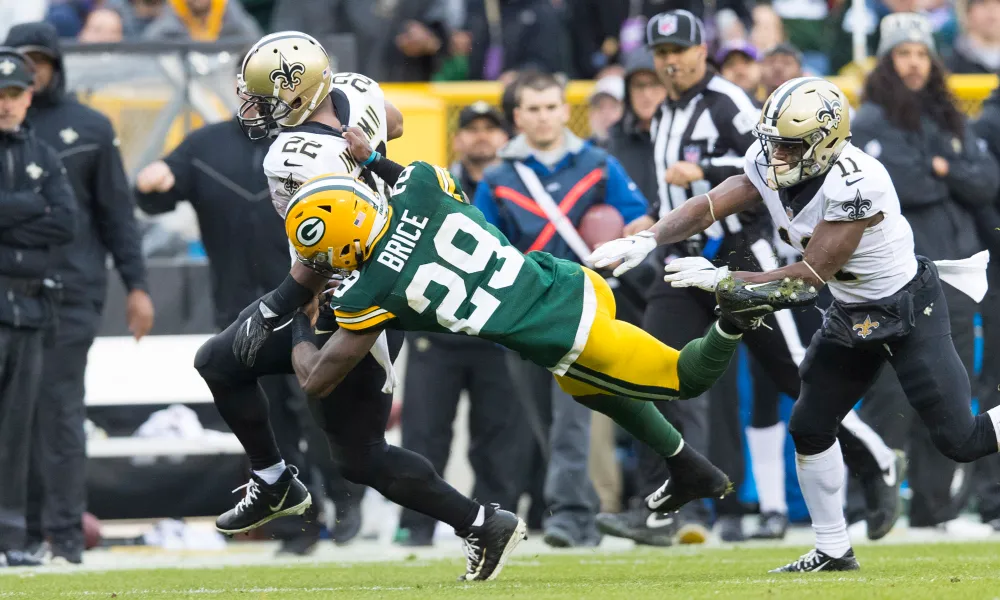Horse-Collar Tackle In Football: Explained
Many football leagues have implemented new regulations in recent years to safeguard the players’ health and welfare. Among the guidelines is one on “horse collar tackle.”
If defenders couldn’t wrap ball carriers up the manner they were usually taught, they had one more tactic at their disposal: the horse collar tackle.
The Green Bay Packers’ Quay Walker was called for a horse-collar tackle on Dallas Cowboys running back Tony Pollard with 1:42 remaining in the first half of the team’s wild-card game on Sunday.
Packers called for a horse collar here but after replay it does not look like a horse collar tackle. #GBvsDAL pic.twitter.com/vt3qUCMHVV
— Rate the Refs App (@Rate_the_Refs) January 14, 2024
According to the NFL’s rule book, this is what it says.
“No player shall grab the inside collar of the back or the side of the shoulder pads or jersey, or grab the jersey at the name plate or above, and pull the runner toward the ground,” according to the NFL Football Operations definition, “This does not apply to a runner who is in the tackle box or to a quarterback who is in the pocket. Note: It is not necessary for a player to pull the runner completely to the ground in order for the act to be illegal. If his knees are buckled by the action, it is a foul, even if the runner is not pulled completely to the ground.”
Is this a horse collar tackle?
The officials think so 🤡 #GBvsDAL pic.twitter.com/jHdwKpEiAX
— Mike McDaniel (@MikMcDaniel) January 14, 2024
Horse-Collar Tackle In Football
A defender may still make the tackle using this move even when the ball carrier is in front of them.
When a defender tackles a ball carrier by putting their hands under the collar of their shoulder pads, it’s known as a horse collar tackle.
The shoulder pads feature a horse collar-like loop form in the rear, close to the base of the neck. That’s where the name of the move originates.
Strangest penalty and fine ($16,391) this year?
Jalen Hurts tackle against the Giants…
When was the last time a QB got flagged for a horse collar tackle? 😅 pic.twitter.com/0k6lwX9gmC
— Tidal League (@TidalLeague) January 13, 2024
This portion of the shoulder pads protrudes slightly from the player’s torso, giving a defender space to reach inside, seize it, and use force to pull the pads to bring the ball carrier down.
Many severe injuries have resulted from this approach. Their bodies might flex awkwardly when the ball carrier is being pulled down like that.
They frequently tuck their legs under them and bend backward in strange positions, which can seriously injure their ankles, feet, legs, and knees. This play may cause them to have severe back problems as well.
That was not a horse collar tackle!!!!
Bad call referees!!! pic.twitter.com/57IdUR6IJB— Milton (@SoulPatch8) January 14, 2024
The Penalty for a Horse Collar Tackle
It is regarded as one of the biggest penalties in a football game due to the significant risk of serious injury.
At the conclusion of the play, the defense will be penalized 15 yards for horse collar tackles.
These fifteen yards are added by the referee to the location of the tackle.
The following play will begin from the offensive team’s own 40-yard line if the runner is tackled at their own 25-yard line.
Furthermore, the offense will automatically receive a first down following a horse collar tackle, regardless of the down or distance after the tackle.
FOR MORE SPORTS COVERAGE-


